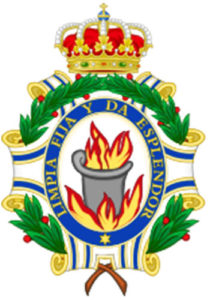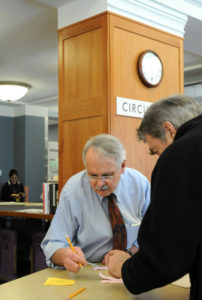In September, Charles Faulhaber, former director of UC Berkeley’s Bancroft Library, was elected to join 100 scholars and researchers as a foreign corresponding member of the Royal Spanish Academy, or Real Academia Española. Below are excerpts from a Q & A with Faulhaber.

1. What is it that fascinates you most about your work with medieval Spanish literature? How does it fit into the overall arc of your life as a scholar?
It’s the thrill of the hunt. I never know what I am going to find when I sit down in a library and ask to see a manuscript. I may find a text that is utterly unknown. I may find a manuscript of a text previously known only in printed form. When I look at a manuscript I am not looking for anything in particular. What I find is due to pure serendipity.
And I think that serendipity and chance have played major roles in my life as a scholar. It was pure chance that led me to spend junior year in Spain. It was pure chance that the first class I took in graduate school at Yale was on medieval Spanish literature. It was pure chance that one of my professors at the University of Wisconsin would become the director of the Hispanic Society of America and later ask me to catalog its medieval manuscripts.

2. After your busy and productive years as Director of the Bancroft Library, what are you relishing about retirement? What do you miss most about serving as Bancroft Director?
Retirement has given me the opportunity to concentrate on PhiloBiblon (a bio-bibliographical database of medieval texts from the Iberian Peninsula) with the kind of intensity that was simply not possible before. And, of course, it has made it possible to travel much more frequently, both for research trips to Spain and for pleasure, like my and my wife Jamy’s current trip to Greece.
What I miss most from Bancroft are the people, both inside and outside of the library. I still see most of my former Bancroft colleagues since I take a regular turn on the Reference Desk as a volunteer, but I do not see nearly as many of the Friends of the Bancroft Library as I would like.
3. Tell us about the work that earned you the honor of election to the Royal Spanish Academy.
Embarrassing as it is to admit it, part of this is sheer longevity. I have been studying medieval Spanish literature seriously for almost fifty years. I started out by examining the influence of Classical Latin rhetoric on medieval Spanish literature, but I became increasingly aware that my work was partial and incomplete because many important texts existed only as manuscripts that had never even been described, let alone transcribed. In order to study the literature you must first define the corpus.
I did not become fully aware of this until I was invited to catalog the medieval manuscripts of the Hispanic Society of America in 1978. The HSA, in New York, is the largest Spanish library outside of Spain. As a result of that work I was invited to take over the Bibliography of Old Spanish Texts, originally an in-house database of incunabula and pre-1500 manuscripts to provide lexical material for the Dictionary of the Old Spanish Language at the University of Wisconsin. That was in 1981. Since then I have been joined by a group of scholars whose collective efforts have created the PhiloBiblon database for the study of the primary sources of the medieval Iberian literatures — Spanish, Catalan, Galician, and Portuguese — and the individuals and institutions that created and disseminated them. PhiloBiblon currently has over 340,000 entries and has spurred a renewed interest in textual and manuscript studies.
4. What new or new-ish digital tools and resources in your field have opened up research possibilities that didn’t exist before? (And, are there any you’d like to see?)
For decades what used to be called “humanities computing” was practiced by a handful of scholars, but for most humanists the computer was simply a glorified typewriter. What changed it into the Digital Humanities was the explosion of digital resources, starting in the 1990s. The Berkeley Library played a pioneering role in this process under the leadership of former Berkeley librarians Daniel Pitti and Bernie Hurley. I became involved in it almost as soon as I came to Bancroft in 1995, with the Digital Scriptorium project to digitize medieval manuscripts.
However, my sense is that to date Digital Humanities is still more about potential than achievement. It is very difficult to point to a DH project and say, “This has really revolutionized our understanding of Cervantes or Shakespeare.” But DH is in its infancy. Of what use is a new-born baby?
In 1991 I gave a paper at a conference on medieval Spanish literature on desiderata for its study, focusing primarily on digital tools and databases. In 2011 I gave a retrospective paper on the same theme at a conference in Barcelona. Not one of the tools I envisioned 20 years earlier had been created. Why not? Principally lack of money. Humanities scholarship simply does not receive the same level of funding, by several orders of magnitude, as scientific research.